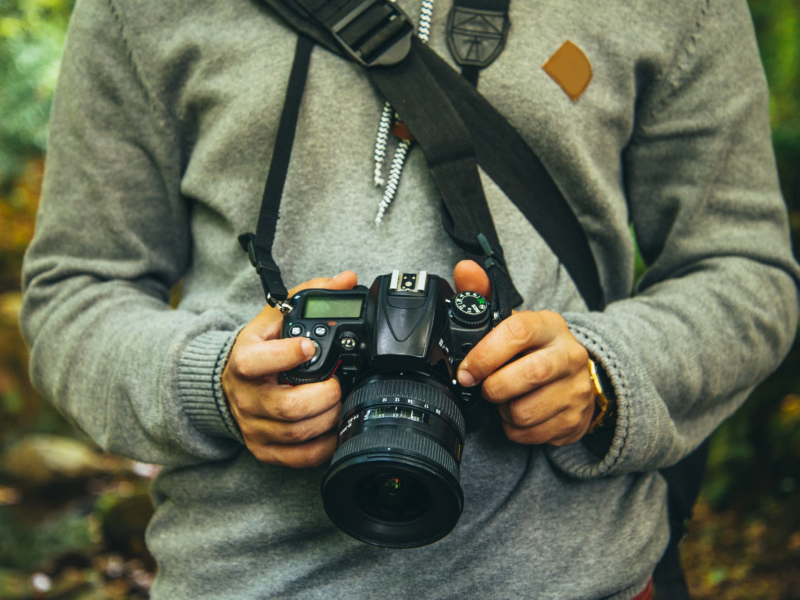A Comprehensive Guide to Photography for Beginners: Capturing Moments with Confidence
Introduction
Photography is a powerful art form that allows you to capture moments, emotions, and stories through the lens of a camera. Whether you’re using a smartphone or a professional DSLR, photography is accessible to everyone. If you’re a beginner eager to dive into the world of photography, this comprehensive guide is here to help you get started on your journey towards becoming a confident and skilled photographer.
Chapter 1: Understanding Your Camera
To embark on your photography journey, it’s essential to understand the tool you’ll be using – your camera. Whether you have a dedicated camera or you’re using your smartphone, knowing its features and settings is crucial.
- **Camera Types**
– DSLR Cameras: These provide manual control over settings like aperture, shutter speed, and ISO, making them ideal for learning photography.
– Mirrorless Cameras: These offer the versatility of DSLRs but in a more compact form.
– Smartphone Cameras: While limited in manual controls, smartphones can capture impressive photos with some practice.
- **Camera Settings**
– Resolution: Higher resolution results in more detailed images.
– Image Formats: Choose between JPEG (compressed) and RAW (uncompressed) formats.
– Auto Mode: Start with auto mode to get comfortable with your camera.
- **Basic Camera Functions**
– Focus: Understand how to focus on your subject.
– Exposure: Learn about aperture, shutter speed, and ISO settings.
Chapter 2: Mastering Composition
Composition is the art of arranging elements in your frame to create visually appealing photographs.
- **Rule of Thirds**
– Divide your frame into a 3×3 grid and place your subject along these lines or at their intersections.
- **Leading Lines**
– Use lines, such as roads or fences, to guide the viewer’s eye to the subject.
- **Framing**
– Frame your subject with objects like doorways, windows, or branches to add depth and context.
- **Perspective**
– Experiment with different angles to capture unique and engaging shots.
Chapter 3: Lighting Techniques
Lighting is one of the most critical aspects of photography, as it greatly impacts the mood and quality of your photos.
- **Natural Light**
– Experiment with different times of day to capture the best natural light.
– Use diffusers and reflectors to control harsh light.
- **Artificial Light**
– Learn to use flash, studio lights, and continuous lighting setups for indoor or controlled environments.
Chapter 4: Basic Editing
Post-processing can enhance your photos and correct any imperfections.
- **Editing Software**
– Explore software like Adobe Lightroom, Photoshop, or free options like GIMP and Snapseed.
- **Editing Techniques**
– Adjust exposure, contrast, saturation, and sharpness.
– Crop and straighten your photos for better composition.
Chapter 5: Photography Styles and Genres
Discover various photography styles and genres to find what inspires you.
- **Portrait Photography**
– Focus on capturing people’s emotions and personalities.
- **Landscape Photography**
– Showcase the beauty of nature and scenic locations.
- **Street Photography**
– Capture candid moments and daily life in urban settings.
- **Macro Photography**
– Dive into the world of small details and intricate textures.
Chapter 6: Building a Photography Portfolio
If you aspire to share your work with the world or even start a photography business, creating a portfolio is essential.
- **Selecting Your Best Work**
– Curate a collection of your finest photos that represent your style.
- **Online Presence**
– Create a website or use photography platforms like Instagram and 500px to showcase your portfolio.
- **Networking**
– Connect with other photographers and join photography communities for feedback and exposure.
Chapter 7: Photography Tips and Tricks
Here are some additional tips to help you on your photography journey:
- **Practice Regularly**
– The more you shoot, the better you’ll become.
- **Learn from Others**
– Study the work of famous photographers and follow photography blogs and YouTube channels.
- **Experiment and Take Risks**
– Don’t be afraid to try new techniques and push your creative boundaries.
- **Keep Your Gear Clean and Protected**
– Invest in camera care and protective gear to ensure your equipment stays in top shape.
Conclusion
Photography is a rewarding and ever-evolving hobby or profession. With dedication, practice, and a willingness to learn, you can capture breathtaking moments and tell compelling stories through your photographs. Remember, there are no strict rules in art; your unique perspective is what will make your photography stand out. So grab your camera, venture into the world, and start capturing moments with confidence. Happy shooting!






